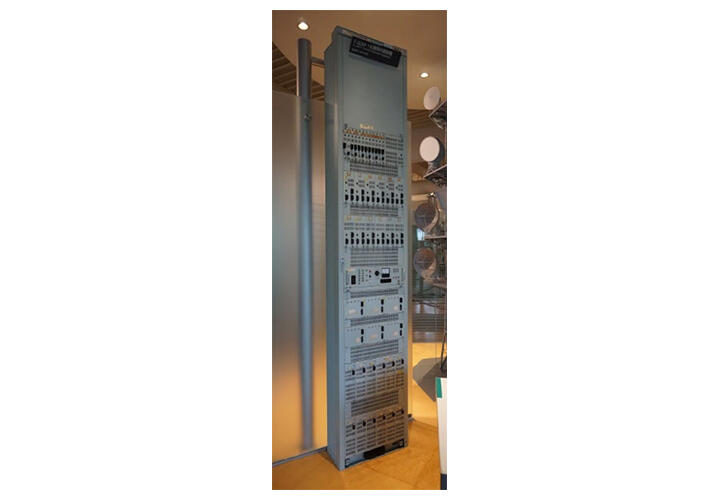Microsoft ends support for Internet Explorer on June 16, 2022.
We recommend using one of the browsers listed below.
- Microsoft Edge(Latest version)
- Mozilla Firefox(Latest version)
- Google Chrome(Latest version)
- Apple Safari(Latest version)
Please contact your browser provider for download and installation instructions.
September 3, 2019
Nippon Telegraph and Telephone Corporation
"Apparatus for Production of Optical Fiber Base Material Using the VAD Method" and "F-32M-1 Terminal Repeater Equipment" belonging to NTT History Center of Technologies have been registered as "Essential Historical Materials for Science and Technology" by
Nippon Telegraph and Telephone Corporation (NTT; Head Office: Chiyoda-ku, Tokyo; President & CEO: Jun Sawada) is honored to announce that the "Apparatus for Production of Optical Fiber Base Material Using the VAD Method" and "F-32M-1 Terminal Repeater Equipment" which are owned by the NTT History Center of Technologies have been registered as "Essential Historical Materials for Science and Technology" by the National Museum of Nature and Science on 3rd September 2019.
The "Apparatus for Production of Optical Fiber Base Material Using the VAD Method" greatly contributed to the invention of a Japan-originated mass production method of optical fibers, called the Vapor-phase axial deposition (VAD) method. The "F-32M-1 Terminal Repeater Equipment" was introduced to NTT's fiber-optic transmission for practical use for the first time in the world. They are both valued as the historical assets that show the development history of science and technology in Japan.
The R&D of optical fiber networks in Japan began in 1970s, and the R&D of various fields concerning optical fiber networks proceeded to realize the optical fiber network. In 1977, NTT (at that time, Nippon Telegraph and Telephone Public Corporation) and Furukawa Electric Co., Ltd., Sumitomo Electric Industries, Ltd., Fujikura Ltd. (at that time, Fujikura Electric Wire Co., Ltd.) collaborated and invented the VAD method. The VAD method has made it possible to product optical fiber preforms stably, efficiently, and economically. The technology progressed up to being able to make 1,000-2,000 kilometers of optical fiber from one preform made with the VAD method.
The "F-32M-1 Terminal Repeater Equipment", which was the first unit of fiber-optical transmission system, became the beginning of the optical networks in Japan, and the technologies led the world.
Both historical exhibits are very important to show the beginning of the era of optical fiber networks.
 Apparatus for Production of Optical Fiber Base Material Using the VAD Method
Apparatus for Production of Optical Fiber Base Material Using the VAD Method
(NTT History Center of Technologies)
 F-32M-1 Terminal Repeater Equipment
F-32M-1 Terminal Repeater Equipment
(NTT History Center of Technologies)
Contact Information
Nippon Telegraph and Telephone Corporation
Information Network Laboratory Group
Planning Department, Public Relations Section
E-mail:inlg-pr-pb-ml@hco.ntt.co.jp
Information is current as of the date of issue of the individual press release.
Please be advised that information may be outdated after that point.
NTT STORY
WEB media that thinks about the future with NTT










